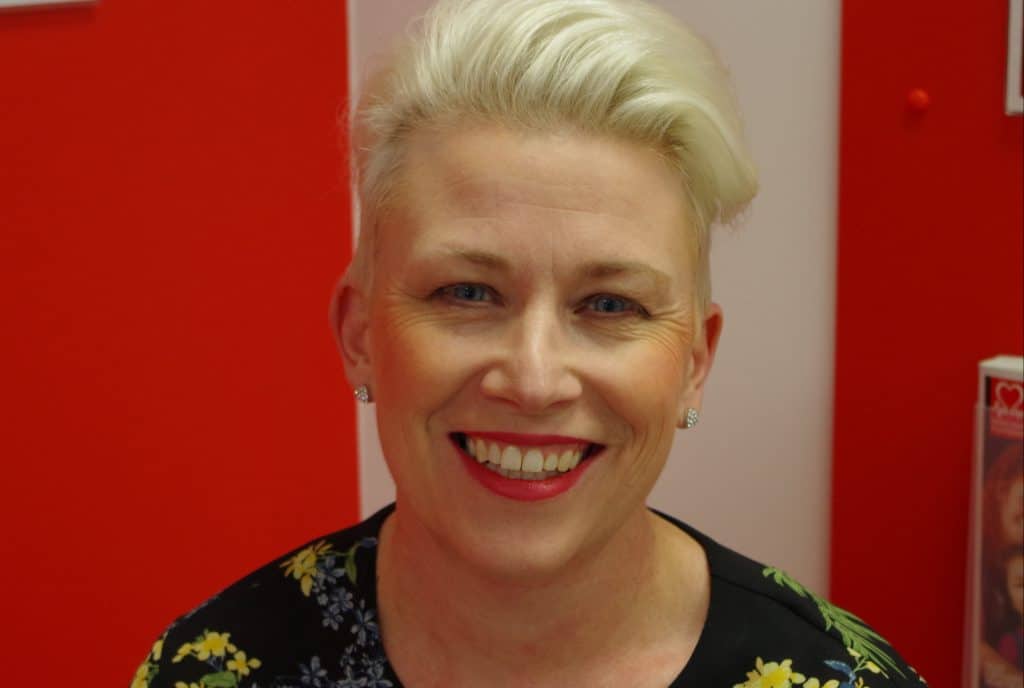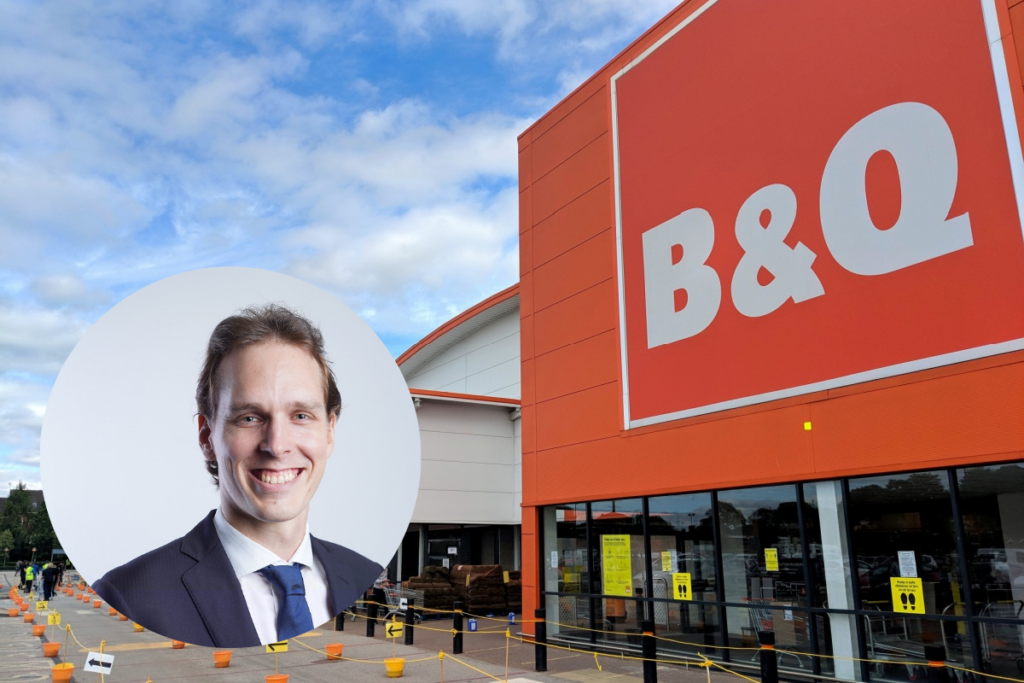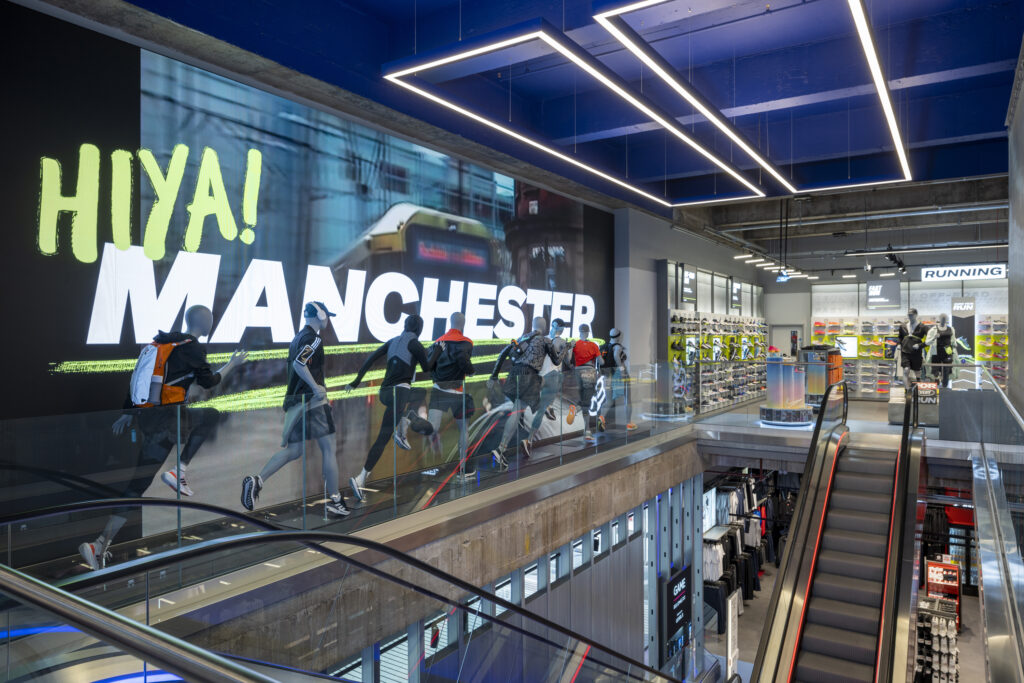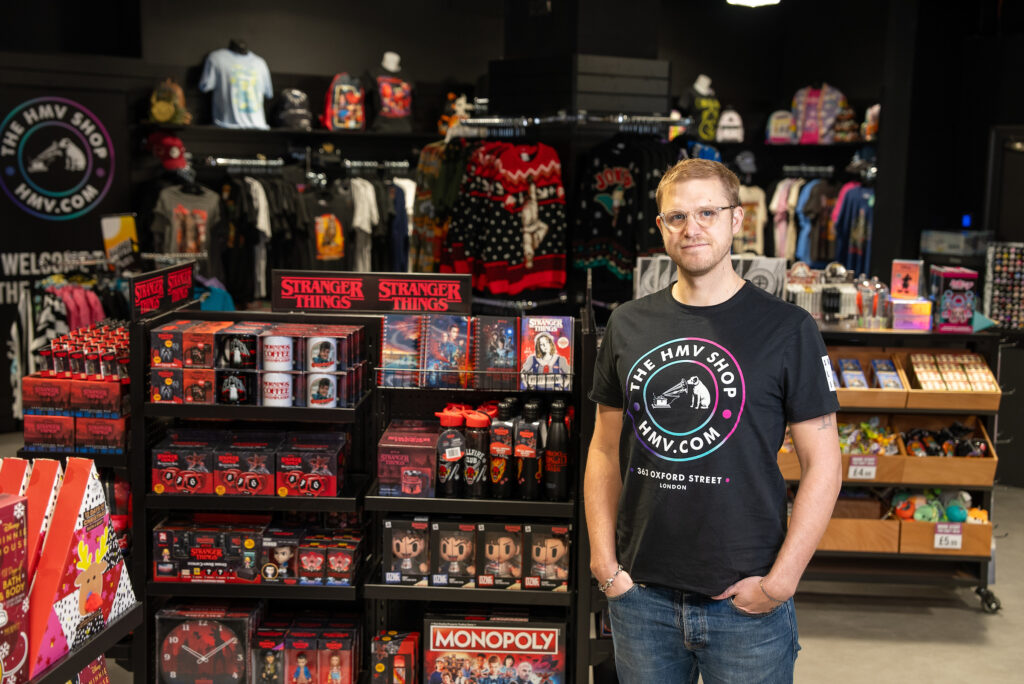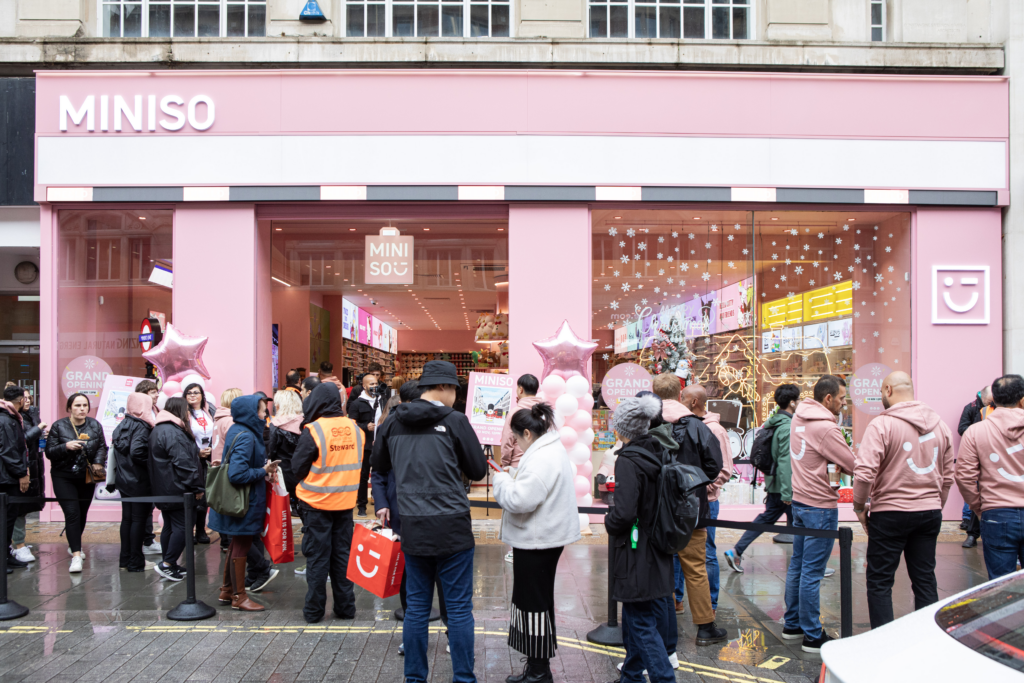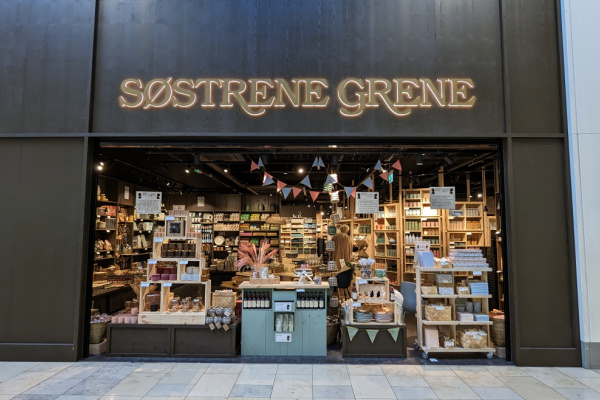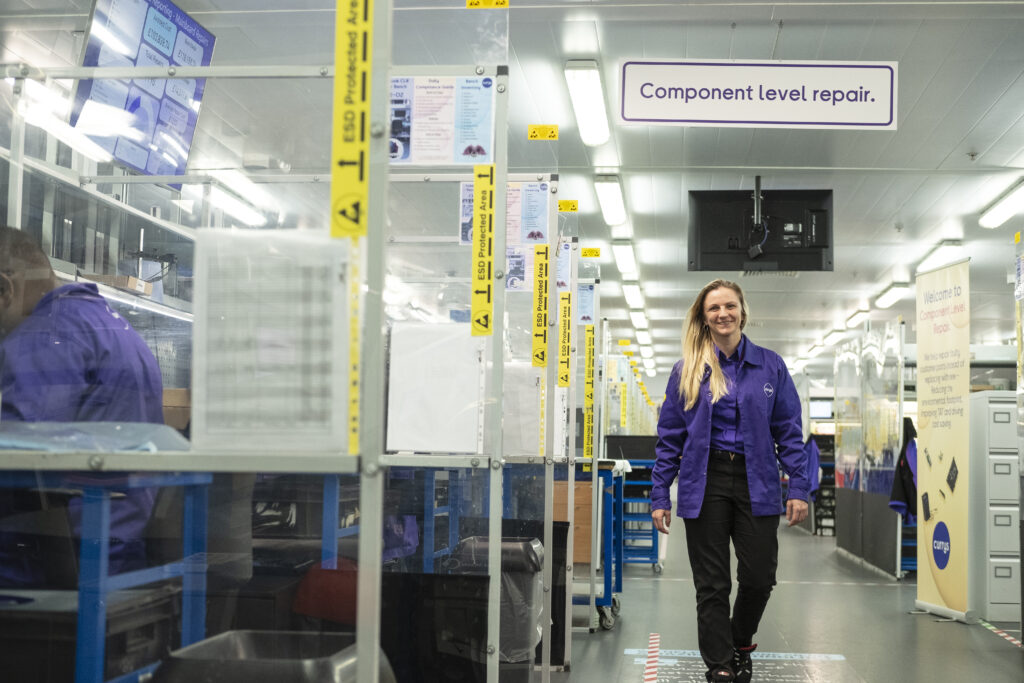With the airing of Fashion’s Dirty Secrets: Stacey Dooley Investigates at the start of the month, consumers are taking note of their fast fashion purchases and a seismic change is afoot.
From discussions among Instagram bloggers to Sunday supplement think pieces, 2018 has seen eco-credentials become a major issue for retailers as their customers begin to ask serious questions about the volume of the clothes they buy, and their motives behind each purchase.
It’s a shift even full-price retailers are keen to get behind. Earlier this year, Harrods partnered with the NSPCC to launch the Fashion Retold project, which was open on London’s Sloane Street throughout April.
Selfridges currently has a second hand pop-up running with luxury re-selling website Vestiaire Collective and just last month, a Jeff Goldblum charity shop hit headlines for filling every photo frame in-store with photos of the actor.
Second hand is on the zeitgeist’s agenda, and it’s likely to stay. But there is a corner of the retail industry that’s been behind this fight for years: charity shops.
The Retail Gazette spoke to British Heart Foundation’s (BHF) retail director Allison Swaine-Hughes to get the lay of the land and discuss the hidden benefits of charity shops on the high street.
Having joined BHF three years ago after 20 years working with full priced fashion retailers, including Gap and then Asda George, Swaine-Hughes said it was curiosity that led her over to the charity sector.
“It was one of those strange things, someone put an advert on LinkedIn, and I became very curious about it and initially I went along for a conversation just because I was interested, and I have to say I was absolutely fascinated.
“To be able to take donated product and lead a team of volunteers, and generate the income we do and the profit that we do is just phenomenal.”
Twenty years ago, charity shops had a reputation for being poorly organised and selling bric-a-brac. Today they have the potential to become growing network of home and fashion stores, filling empty high street spaces with lower-price items and community outreach programmes.
Often an overlooked element of the high street that so often veers towards the “pile ‘em high and watch ‘em fly” strategy that has served fast fashion so well in previous years, charities such as BHF do a huge amount behind the scenes for the recycled clothing cause, by reducing waste and raising money for vital scientific research.
Founded in 1961, the BHF receives 23 per cent of its income from its retail division, which makes around £30 million each year.
“We are leading the market as the biggest charity retailer in Europe so we have around 730 stores across the UK and the biggest eBay operation within Europe as well,” Swaine-Hughes said.
Asked how she overseas such a mammoth operation against such torrid times on the high street, her previous experience had a part to play.
“[Leading BHF’s retail division] was a really interesting proposition at a time where charity retail is going through a lot of transitions,” she reflected.
“There’s been a lot of professionalising of charities, because our customers and donors have expectations and after 20 years of working in retail I felt I had something to offer – and it turns out I do.”
When asked about the major changes that have taken place on the high street during her career, Swaine-Hughes said the shift in real estate to online was unavoidable.
“There has been transformation over the years and I think one of the big aspects that you’ll also see in full priced retail too, is how is your real estate changing versus what activity you do online,” she said.
“We face very similar challenges as our full priced counterparts on the high street and I think it’s about how we operate in that space in the best possible way.
“The key challenges for us are making sure we make the right investments, because we are dealing with charitable funds, so we need to make sure our supporters trust us in the decisions that we make.
“The other key piece is making sure we maintain that trust element but also the demographic of our customers. There has been a growth in preloved furniture and you’ll see it through websites, whether it’s [second hand clothing app] Depop or online vintage sellers.
“We in charity retail need to make sure we are still relevant.”
The BHF eBay operation was set up in 2006 in two rooms above a shop in Halifax, before moving to a warehouse in Leeds. Staff numbers have grown from six to 25, and BHF raised £3 million from their eBay operation last year alone.
Many of the warehouse staff have specialist knowledge in a particular area, such as crockery or fashion, meaning they are well-placed to sell valuable items for far more than they’d usually retail for in a high street charity shop.
“With us investing in the eBay operation we have seen that we have been able to tap into that market, we have broadened what we can take,” Swaine-Hughes commented.
“Where you have a charity retail shop, we have 550 of those, we needed to make sure we have broad appeal, so we now have a chain of furniture and electrical stores – we have 130 of those nationally.
“We can pretty much take anything and turn anything into [the BHF] research and that’s what we are here to do: we are here to take that money and take it for our cause.”
Aside from raising funds for the BHF, Swaine-Hughes was keen to highlight the charity’s operations also reduce clothing and furniture waste right across the UK.
“Our shops also make a huge environmental impact by preventing around 70,000 tonnes of unwanted items going to landfill every year,” she said.
“We receive 1.6 million items donated to our stores and 9.8 million bags of donated stuff.
“There’s a lot of environmental pressure, particularly for the councils that havelandfull commitments that they need to adhere to – they are looking for a solution.”
She added: “What charities can do is partner with organisations to help solve a problem.
“That’s exactly what we’ve done at the BHF with our furniture business, where we have over 30 partnerships with full priced retail organisations and we help them address that.
“There’s not necessarily an increase or decrease [in the amount of donations we receive], but people are changing how they want to donate.
“The big push for us is that donors are wanting convenience, and they’re wanting it to be made nice and easy to give to their chosen charity. We do enjoy seeing people’s generosity when they drive to town, they wash and iron everything, but we also now offer the service of free collection.
“At the BHF we have been very focused on making sure it is as straightforward as possible but also that you feel thanked.
“We also take around 7000 bookings per week and about 45,000 calls and that’s just into furniture.”
Those donations aren’t just from customers with BHF keen to partner with larger retailers too.
“One of the big things we are focused on as well is business solutions, we are very fortunate that there are a number of retailers that look at their potentially old lines, end of lines, as we have capability to be able to take that product as well,” Swaine-Hughes said.
While high street retailers may be up against it, trading conditions for second hand shops with far lower investment can’t be easy, either. But Swaine-Hughes maintains that charity shops can hold their own, even in the most turbulent of times.
“It is tough on the high-street at the moment and we are subject to the same conditions, in the respect that we will close stores as well, and it’s a very tough decision,” she said.
“We always have to make sure that our promise to the BHF is that we will turn up with a profit each year, and sometimes towns do decline, and we will close stores as well, so we are not immune to what goes on on the high street.
“In terms of concessions, we get a percentage of rate relief, as all charities do, and any local authority then has the discretion to charge an extra 20 per cent, that’s their gift to be able to do that or not.
“For rent, we are subject to the same negotiations that a full-time retailer would be subject to so there’s no confession in that respect, if we are on the high street, we will be paying a going rate, although we negotiate – don’t get me wrong.
“We have a real connection to the communities because they are community hubs, we offer the CPR training, we offer health information, and the community is running the store.”
It’s here that charity shops are able to offer the side of high street retailing so many other businesses struggle to fulfil. By having that charity element in their nature, Swaine-Hughes argues they’ve approaching retail from a completely differrent perspective.
“Charity retail has an impression that it is slower but ultimately it’s a great retail experience,” she commented.
“There is a key difference around how we work together, I’m a member of the charity retail association board, the collaboration that goes on to make the sector better, we share ideas and share ideas with competitors which I never would have done in my days of full priced retail.”
This transformation is attracting an expanding customer base – BHF is also engaging with younger volunteers and using celebrities and influencers to attract new audiences. Recent campaigns have included actress Jennifer Metcalfe modelling a fascinator range while Instagram influencers Muck and Brass have worked with them on upcycle advice for a wider audience.
“Because we want to make the sector better, which is fantastic, sharing new ideas, because we each have our individual cause – very important causes as well,” Swaine-Hughes said.
With so many high streets battling against store closures as retailers battle rising rents, charity shops are often discounted in the conversation for regeneration, but Swaine-Hughes believes the opposite – that’s there’s plenty of opportunity for charity shops to breathe life back into deserted high streets.
“We know we go into sites on the high street that would have been left vacant, it’s great when I see the before and after shots of when we have opened and you have completely regenerated the look and feel of the site,” she commented.
“We have just opened some of our largest charity shops within our store portfolio and I think pretty much the largest in the UK which is in Kingston, and we had immediate feedback from those other tenants on that parade that it was great we were there because it was a very big empty unit sitting opposite them.”
The Kingston store represents BHF’s first pop-up location, housed in a temporary outlet for two years (in a former BHS store), with a shop that aims to raise money for life-saving heart research as well as breathing new life into a high street and creating a community hub in a space that may otherwise have been left empty on the high street.
The newly designed 17,000sq ft site is one of several new department store-style outlets the BHF have opened in recent months and will host both home and fashion departments offering a range of good quality new and used furniture, homeware, clothing, accessories and books.
The store will also offer shoppers heart health information, CPR training sessions, and create retail jobs and volunteering opportunities for people of every age – from school leavers looking to gain retail experience to retirees looking to help BHF beat heart disease – as well as help local businesses and homes with clearing out resalable furniture.
As for the future of the BHF, Swaine-Hughes believes customer outreach remains a clear target.
“We will continue to look at our online presence, very much in terms of growing our eBay proposition, and also testing other platforms, and seeing how we can target different customers, how we are represented on social media,” she said.
“In terms of what we look like on the high-street we are definitely testing what we look like. The Kingston store has a department store format, and we have a number of those across the country at the moment. We are also developing some of our value stores, because again in certain towns there may be more a value proposition.
“It’s a case of looking at what works in the various locations. We need to have a role in making sure people are aware of what the BHF does. People need to know we spend £100 million a year on research. It’s not just cardiovascular its diabetes, strokes and vascular dementia.
“We have a role going beyond how we look and what’s going on online, but also how we make sure people know what they are supporting. We will definitely be developing that in our look and feel.”
And for the high street?
“No one wants the high street to die, there is changing times ahead, we want to see the high street thrive, and survive,” Swaine-Hughes said.
“Ultimately, we are there to help people, this is not lining the pockets of anybody this is going out making sure we can be part of the community, massive reuse, we sell 150,000 sofas a year, you’ve got to think where would they be going? They would be going to landfill. So from our point of view we are serving the community in many different ways.”
Click here to sign up to Retail Gazette‘s free daily email newsletter

